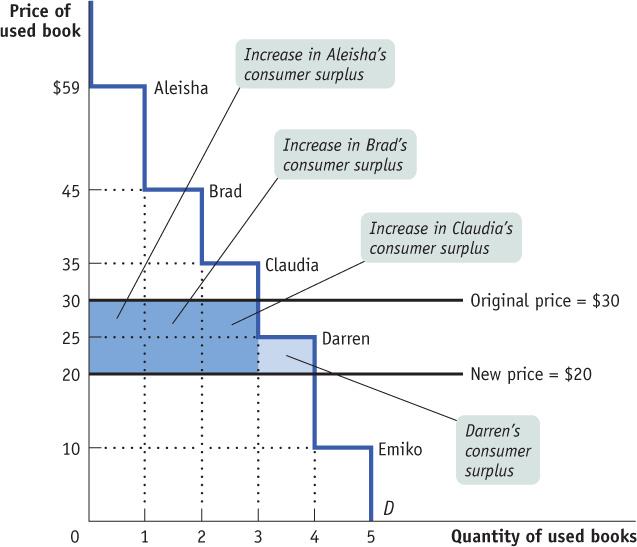
Figure4-4Consumer Surplus and a Fall in the Price of Used Textbooks There are two parts to the increase in consumer surplus generated by a fall in price from $30 to $20. The first is given by the dark blue rectangle: each person who would have bought at the original price of $30—Aleisha, Brad, and Claudia— receives an increase in consumer surplus equal to the total reduction in price, $10. So the area of the dark blue rectangle corresponds to an amount equal to 3 × $10 = $30. The second part is given by the light blue area: the increase in consumer surplus for those who would not have bought at the original price of $30 but who buy at the new price of $20—namely, Darren. Darren’s willingness to pay is $25, so he now receives consumer surplus of $5. The total increase in consumer surplus is (3 × $10) + $5 = $35, represented by the sum of the shaded areas. Likewise, a rise in price from $20 to $30 would decrease consumer surplus by $35, the amount corresponding to the sum of the shaded areas.